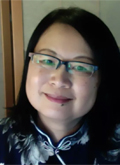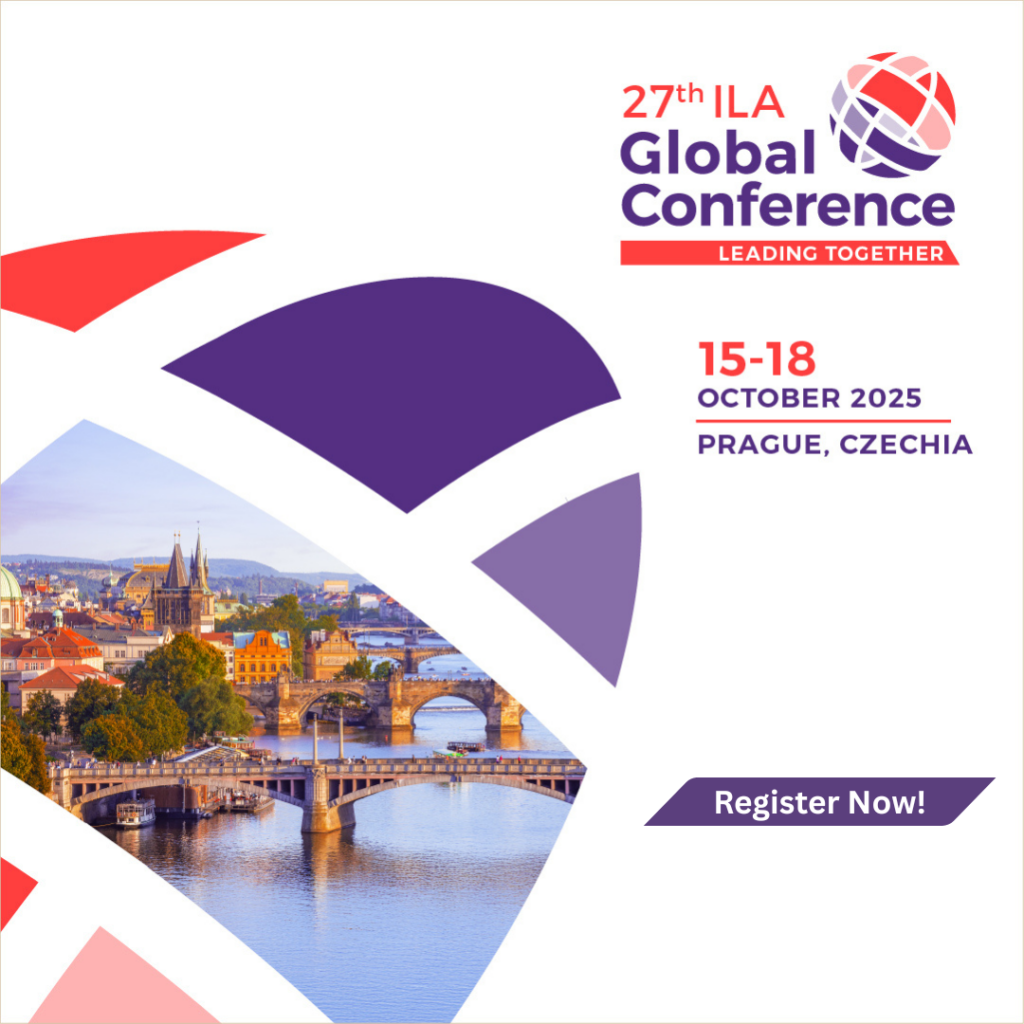
by Mei-Yan Lu, Professor, Department of Educational Leadership, Connie L. Lurie College of Education, San Jose State University
5 November 2020
Share this article:
I attended my first ILA Women & Leadership conference, which happened to be virtual, in June 2020. At first, I did not know what to expect. Most virtual conferences I had previously attended consisted of a series of presentations delivering content with limited opportunities for discussion. Nevertheless, as a leadership scholar working on researching the topic of supporting university women student leadership self-efficacy, I was eager to find opportunities where I could actually meet the presenters and network with other attendees. Given the impact of COVID-19 on travel, I was excited to see a virtual conference being offered and immediately registered to attend.
I was happy to receive an invitation to attend a pre-conference webinar “Leading Differently: Trailblazing to Be the First of Many.” The webinar consisted of a conversation with Ambassador Suzan Johnson Cook, which was moderated by Carolyn Stefanco, President of The College of Saint Rose, and hosted by Joanne Barnes, Dean of the Graduate School and Professor of Leadership Studies at Indiana Wesleyan University. The live-streamed webinar was inspiring and uplifting. In addition, I thought the conference organizers made a smart decision in hosting a pre-conference as, brilliant content aside, it also allowed participants to become more familiar with the video conferencing system and learn the various ways to participate such as raising hands, using the chat room features and more. (You can check out this specific webinar via the ILA’s Facebook page. I also wanted to mention that I’m thrilled that many of the conference sessions were recorded and made available online for registered conference attendees for 30 days after the conference.)
However, I was still concerned that I would not be able to meet new people at the virtual conference. Expanding my professional network has always been a primary goal and motivator for me to attend conferences. Like most conference attendees, I meet new contacts by attending sessions and talking to people who happen to sit next to me at conference sessions, conference receptions, or in hotel lobbies. When I attended the opening session, I asked Joanne Barnes how I could meet people at the virtual conference. She recommended that I host my own Zoom meet-up during session breaks or in the evening after the conference had concluded each day. She encouraged me to post the meetup announcement on the conference’s electronic Padlet bulletin board.
Many thoughts ran through my mind, including feelings of awkwardness toward meeting people in virtual settings. However, I said to myself, why don’t I also take this opportunity to step out of my comfort zone? I was, after all, working on a research project on supporting university women leadership self-efficacy, so I said to myself, why not host a Zoom meetup connect with other participants? I might even get the chance to discuss my research! From there, my inspiration continued to blossom: Why not host a meetup for each day of the conference, with the hopes of meeting new people and discussing potential research topics? With this in mind, I gathered my nerves and posted my meeting invitation.
I believe this organically developed women & leadership Virtual Coffee network will do great things together.
At the first meet-up, I met several women leaders. One of the participants was Bonita Banducci who teaches at Santa Clara University – only 15 minutes away from San Jose State University, where I teach. I was happy to find that we hold many similar research interests. I deeply admire her expertise in gender communication. I invited Bonita to present at the next meet-up. We came up with the topic “Women’s Hidden Unnamed, Misinterpreted Competencies: Devil’s Advocate Meet Angel’s Advocate.” It was well received. We had great discussions. I asked the participants to volunteer a topic for the next meetup. Bonita was the one who came up with a new topic “The Future of Working Together: Eastern & Western Types of Mindsets,” which led to another fabulous discussion. On the final day of the conference, Amanda Wickramasinghe suggested we continue our discussion group through weekly meetings. Thus, the birth of the Thursday virtual coffee from 2-3 PM Pacific time/ 5-6 PM Eastern time.
At the Thursday virtual coffee, we continued the tradition of addressing a new topic at each meeting. Catharyn Baird attended the last conference meet up and since I had attended her session on “Change a Mind-Change a Life: Transforming Core Beliefs to Shape Values and Enhance Effectiveness,” I asked Catharyn if she would be willing to lead our first virtual coffee discussion. Not only did she say yes, she also provided access to the ELI (Ethical Lens Inventory) to enable participants to take the inventory and save the results for discussion.
Through ILA’s Women and Leadership conference, I have met many women leaders and experts. For example, Chrys Egan, who presented with her colleagues on “Peer to Peer Women’s Circles: Capacious, Inclusive, Professional Development by Women for Women.” Chrys is one of the leaders of ILA’s Women and Leadership member community, so I consulted with her on how to meet the needs of the Virtual Coffee participants. Hence, the birth of another brilliant idea: a Google Drive resource shared with participants where we can suggest topics, volunteer to be the speaker or discussion leader, vote anonymously for future topics, and more.
Participants are free to invite their friends and colleagues to attend. As of this writing, we’ve met five times post-conference with about12-18 participants each time.
We’ve made adjustments to serve participants better and to maximize our time together. An electronic Padlet bulletin board was created to enable participants to post a brief bio/photo with LinkedIn contacts. Therefore, we can save time from having to introduce ourselves to each other at the beginning of every meeting. Each time we meet, we have a topic, and from time to time, we have a handout and assessment to take. Each session is recorded as recommended by the participants. At the end of each meetup, I send meeting notes to participants with the recording and a reminder for the next discussion topic. Not everyone can participate each week. Nevertheless, we have grown to 40 people after five meetings. Typical attendance is 13-18 people each week via Zoom.
You may ask me why I continue to volunteer? One reason is I like to meet other professionals and connect them with my undergraduate students, particularly when they’re working on their informational interview assignments in my personal, academic, and career exploration class. Many of my undergraduate students are first generation, immigrant, and/or international students. I was one of them. I know they would benefit from connecting with these colleagues. I’d like to serve as that bridge.
In summary, my experience attending the ILA Women and Leadership conference resulted in much more than I initially expected. Not only did I have the privilege to meet amazing women leaders, but I learned how to serve virtual coffee! In the upcoming virtual coffee meetings, we will discuss how we can build an electronic depository of all the resources we have, and maybe a new name for the virtual coffee. I plan to bring up the idea of building a second electronic Padlet bulletin board where participants can announce their upcoming speaking engagement, new publications, or looking for thinking partners for a research project or more. These are not new ideas. I learned these ideas from the ILA Women and Leadership conference.
One last thing I observed at the ILA Women & Leadership virtual conference was its cross generational representation in attendees. I met women leaders aged 18 to 72. This cross generational dialogue is essential for leadership development, mentoring, coaching, and more (Morris, 2017; Rudolph, Rauvola, & Zacher, 2018).
In 2010, my colleague Noni Mendoza Reis and I wrote a paper titled, “Why Are There So Few of Us? Counter-Stories From Women of Color in Faculty Governance Roles” (Reis & Lu, 2010). Little did we know we would find so many like-minded and amazing women leaders in the next decade!
Lastly, let me share one of my favorite quotes
“If you want to go fast, go alone. If you want to go far, go together.”
I believe this organically developed women & leadership Virtual Coffee network will do great things together. I am empowered through the association of being with other dynamic women in leadership from around the world and I look forward to attending the next Women and Leadership Conference!
We usually meet on the first and third Thursdays of the month with an invited speaker and discussions. If you would like to attend a meeting, please contact me at mei-yan.lu@sjsu.edu or https://www.linkedin.com/in/meiyanlu/
References:
Morris, L. V. (2017). Reverse Mentoring: Untapped Resource in the Academy? Innovative Higher Education, 42(4), 285-287.
Reis, N. M., & Lu, M. Y. (2010). Why Are There so Few of Us? Counter-Stories From Women of Color in Faculty Governance Roles. Educational Leadership, 20(1), 61-97.
Rudolph, C. W., Rauvola, R. S., & Zacher, H. (2018). Leadership and Generations at Work: A Critical Review. The Leadership Quarterly, 29(1), 44-57.

Mei-Yan Lu is Professor of Educational Leadership at the Connie L. Lurie College of Education at San Jose State University (SJSU) in San Jose, California. She served as Associate Dean of the College of Education and many other leadership positions. She has been honored as Teacher Scholar, Faculty-Resident for Online Teaching & Learning, nominated for Outstanding Professors at SJSU. She was the past President of the International Division at Association of Educational Communication and Technology (AECT). She served on the Executive Board of California Professors of Educational Administration. She has been invited to give keynote speeches in state, national conferences and internationally including Thailand, Singapore, Taiwan, Hong Kong and China.


